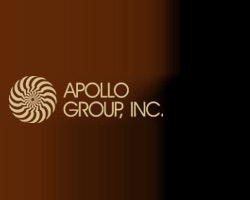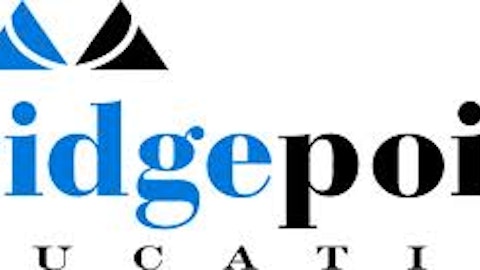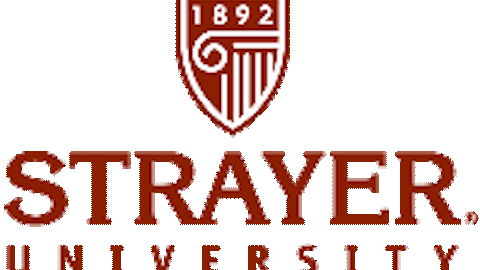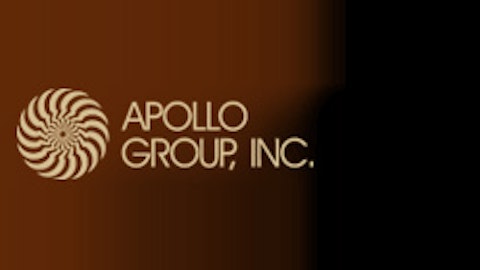According to the National Center for Education Statistics, a record 21.6 million students attended U.S. colleges and universities in 2012, up 40% from 2000. With relatively inelastic demand, seemingly bottomless government funding, and a limited supply of schools, the sector seems to have favorable investment characteristics. Indeed, the industry’s favorable economics led to fast growth for the for-profit education providers, until government investigations into programs and recruiting methods put a clamp on the industry’s growth. So, how can an investor play the sector?

Owning a university
While you probably can’t own shares of your alma mater, you can own Grand Canyon Education Inc (NASDAQ:LOPE), owner of Grand Canyon Education Inc (NASDAQ:LOPE) University and a major player in the online and distance learning segment with roughly 44,000 students. While 85% of its students are in its online programs, the company has grown the student population on its Arizona-based campus to 7,600 students, with a strong value proposition versus the state’s public institutions. Grand Canyon Education Inc (NASDAQ:LOPE) University is also looking more and more like a traditional university, with a goal to grow its campus-based population to 12,000 students by the 2015/2016 school year.
In its latest fiscal year, Grand Canyon Education Inc (NASDAQ:LOPE) Education reported strong financial results, with increases in revenue and adjusted operating income of 19.8% and 39.3%, respectively, versus the prior year. Its sales growth benefited from a 19% increase in its overall student population, as well as a small increase in its tuition rates. More importantly, the company generated higher profitability as it leveraged its administrative structure, allowing it to reinvest in additional classrooms and technology capabilities.
Of course, the wildcard in the industry is Uncle Sam, who is both the primary regulator and the ultimate source of funds through its financial aid programs. The federal government pays the lion’s share of tuition costs at most schools, 80.3% in Grand Canyon Education Inc (NASDAQ:LOPE)’s case, which gives it the ability to determine an organization’s success or failure. It also requires accreditation from a nationally recognized education authority for an organization to receive federal financial aid funding.
A cautionary tale
Grand Canyon Education Inc (NASDAQ:LOPE) Education needs to be vigilant against the dangers of growing too fast, which can raise red flags with education regulators who are concerned with value received for federal education dollars. A case in point is Apollo Group Inc (NASDAQ:APOL) and its University of Phoenix operation that grew into one of the world’s largest educational institutions over the past 40 years, with over 300,000 enrolled students as of December 2012.
Its predominantly online platform allowed it to reach multiples of more students than a traditional university, especially among its working adult demographic. However, the company’s growth has dissipated over the past couple of years as it has had to change recruiting practices and traditional university competitors have moved into the online learning segment.
In FY2013, Apollo Group Inc (NASDAQ:APOL) reported weak financial results, with decreases in revenue and operating income of 12.9% and 21.5%, respectively, versus the prior-year period. The company’s sales growth has been hurt by lower enrollment levels at its University of Phoenix operation, as well as sales of its non-core business units. In addition, Apollo Group Inc (NASDAQ:APOL)’s profitability has been negatively impacted by the costs of closing campus facilities and providing enhanced levels of student services.
Looking for diversification
Given the risks and rewards of the education sector, investors should probably stick with a diversified player that participates in a wide range of segments on a global basis, like The Washington Post Company (NYSE:WPO). The company’s Kaplan unit is a leading provider of education services, including participating in the online education, test preparation, and continuing education markets. It also has a growing international education business, which primarily provides English-language teaching and professional education in select geographies, like Australia and the U.K.
In its latest fiscal year, The Washington Post Company (NYSE:WPO)’s Kaplan had weak financial results, with an 8.7% decrease in segment operating revenue and a steep decline in operating income. The unit’s sales growth was hurt by enrollment declines in its online and campus education segments, as well as lower average pricing in its test preparation business. However, it enjoyed higher revenue and enrollment in its international segment as students flocked to its English-language programs. While the Kaplan unit is being hurt by temporary uncertainties in the domestic education market, it will be a long-term player in the global education market and will benefit from the financial strength of the larger The Washington Post Company (NYSE:WPO) enterprise.
The bottom line
The for-profit education sector has potential changes ahead of it, with a 2012 Senate report generally recommending a host of more restrictive rules for the industry. Despite the uncertainties, for-profit institutions will continue to play a critical role in the education of millions of people around the world. Investors that want exposure to the sector during this volatile period should go with the company that has the best diversification and the financial strength to ride out the storm, which is The Washington Post Company (NYSE:WPO).
The article Should You Dip a Toe in the Education Sector? originally appeared on Fool.com and is written by Robert Hanley.
Robert Hanley has no position in any stocks mentioned. The Motley Fool has no position in any of the stocks mentioned. Robert is a member of The Motley Fool Blog Network — entries represent the personal opinion of the blogger and are not formally edited.
Copyright © 1995 – 2013 The Motley Fool, LLC. All rights reserved. The Motley Fool has a disclosure policy.




